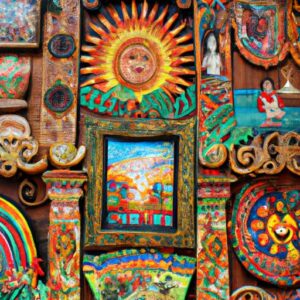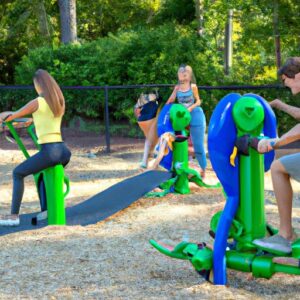Fine arts education in high school encompasses various disciplines like visual arts, music, theater, and dance. It provides students with an opportunity to explore their creative side, express themselves, and develop a deep appreciation for the arts. In this article, we will delve into the definition of Fine Arts Survey in high school and shed light on its significance in shaping well-rounded individuals.
A. Definition of Fine Arts Survey in High School
Fine Arts Survey in high school is a comprehensive program that introduces students to a range of artistic disciplines. It serves as an introductory course, designed to expose students to different art forms and foster their creativity. This course typically covers subjects such as drawing, painting, sculpture, music theory, acting, and dance. Through hands-on experiences and theoretical knowledge, students gain an understanding of the fundamental principles and techniques of each art form.
B. Importance of Fine Arts Education in High School
Fine arts education plays a pivotal role in the holistic development of high school students. It goes beyond the realm of creativity and serves as a catalyst for personal growth and academic success. By engaging in artistic experiences, students enhance their cognitive abilities, critical thinking skills, and emotional intelligence.
The arts enable students to think outside the box, encouraging them to explore different perspectives and find innovative solutions. It nurtures their ability to analyze, interpret, and evaluate, fostering a deeper understanding of themselves and the world around them. Moreover, fine arts education cultivates skills such as discipline, perseverance, and collaboration, which are valuable in various aspects of life.
In addition to fostering individual growth, fine arts education also contributes to a well-rounded education system. It promotes cultural understanding and appreciation, allowing students to connect with diverse artistic traditions and heritage. Furthermore, it provides a platform for self-expression, empowering students to communicate their thoughts, feelings, and experiences in unique and meaningful ways.
In conclusion, Fine Arts Survey in high school offers students a gateway to the world of artistic expression and nurtures their personal and intellectual growth. By embracing the arts, students not only develop creativity but also enhance their critical thinking skills, cultural awareness, and emotional intelligence. In the following sections, we will explore the curriculum, benefits, and role of Fine Arts Survey in high school education, shedding light on the transformative impact it has on students’ lives.
Curriculum Overview of Fine Arts Survey in High School
Fine Arts Survey in high school offers a diverse curriculum that exposes students to a wide range of artistic disciplines. This comprehensive program aims to provide students with a well-rounded arts education. Let’s explore the subjects covered, the duration and frequency of classes, and how fine arts integrates with other academic subjects.
A. Subjects Covered in Fine Arts Survey
Fine Arts Survey in high school covers a variety of artistic disciplines, ensuring students have the opportunity to explore different avenues of creativity. The curriculum typically includes subjects such as:
-
Visual Arts: Students delve into drawing, painting, sculpture, and other visual art forms. They learn various techniques, experiment with different mediums, and develop their artistic skills.
-
Music: Students explore the world of music through theory, history, and practice. They learn to read sheet music, play instruments, and appreciate different genres and styles.
-
Theater: Students engage in acting, improvisation, and theater production. They develop their performance skills, explore theatrical techniques, and gain an understanding of the dramatic arts.
-
Dance: Students learn various dance techniques, styles, and choreography. They develop body awareness, coordination, and expressiveness through movement.
B. Duration and Frequency of Classes
The duration and frequency of Fine Arts Survey classes may vary depending on the school’s curriculum and scheduling. Typically, these classes are offered throughout the academic year. Students may have a designated period each day or a few times a week dedicated to fine arts education.
The duration of each class session can range from 45 minutes to an hour. Some schools may offer longer periods to accommodate more in-depth exploration of artistic projects and techniques. The consistent exposure to fine arts education allows students to develop their skills progressively and engage in creative projects over an extended period.
C. Integration with Other Academic Subjects
Fine Arts Survey in high school often integrates with other academic subjects, creating interdisciplinary connections. For example:
-
English and Language Arts: Students may explore literature and poetry through dramatic readings and performative interpretations.
-
History and Social Studies: Through visual arts and theater, students can explore historical events, cultural traditions, and societal issues, bringing history to life.
-
Science and Technology: Art and design principles can be applied in science projects, creating visual representations of scientific concepts or utilizing digital tools for artistic expression.
By integrating fine arts with other academic subjects, students gain a deeper understanding of the interconnectedness of different disciplines and enhance their learning experience.
In the next section, we will uncover the numerous benefits that Fine Arts Survey in high school offers to students, highlighting the impact it has on their personal and academic growth.
Benefits of Fine Arts Survey in High School
Fine Arts Survey in high school offers a multitude of benefits that extend beyond the realm of artistic expression. Let’s delve into how this program enhances creativity, critical thinking skills, cultural understanding, and social-emotional development.
A. Enhancing Creativity and Self-Expression
Engaging in fine arts allows students to tap into their creative potential and explore their unique artistic voice. Through painting, drawing, music, or theater, students are encouraged to think imaginatively, experiment with different techniques, and express their emotions. This fosters a sense of self-discovery and empowers students to communicate their ideas and perspectives in a visually captivating and emotionally resonant manner.
B. Developing Critical Thinking Skills
Fine arts education in high school cultivates critical thinking skills that are transferable to various academic and real-life contexts. When engaging with different art forms, students are exposed to complex concepts, diverse perspectives, and ambiguous situations. They learn to analyze and interpret works of art, make connections between different elements, and evaluate the effectiveness of artistic choices. These analytical abilities nurture their capacity for observation, problem-solving, and decision-making.
C. Fostering Cultural Understanding and Appreciation
Fine arts survey exposes students to a rich tapestry of cultural traditions, both past and present. By exploring artworks from different cultures and time periods, students gain a deeper understanding of diverse perspectives, values, and aesthetics. They develop empathy and respect for cultural differences, expanding their worldview and broadening their appreciation for the rich tapestry of human creativity.
D. Improving Social and Emotional Skills
Participating in fine arts activities in high school offers students a platform to collaborate, communicate, and connect with others. Whether it’s working together on a theater production, performing in a music ensemble, or creating visual art as a group, students learn to collaborate effectively, listen to others’ ideas, and contribute to a collective vision. Additionally, the arts provide a safe space for self-expression, allowing students to explore and navigate their emotions, fostering self-awareness, empathy, and emotional resilience.
In conclusion, Fine Arts Survey in high school provides numerous benefits to students. It nurtures their creativity, develops critical thinking skills, fosters cultural understanding, and enhances social and emotional skills. By immersing themselves in the world of fine arts, students gain invaluable tools that will serve them well in their academic journey and beyond. In the following sections, we will explore the role of Fine Arts Survey in high school education and the challenges faced in its implementation.
Role of Fine Arts Survey in High School Education
Fine Arts Survey in high school plays a crucial role in shaping students’ academic achievement, preparing them for future education and careers in the arts, and promoting well-rounded personal development.
A. Supporting Overall Academic Achievement
Engaging in fine arts education has been shown to have a positive impact on overall academic performance. Studies have consistently found that students involved in the arts tend to have higher grades, better attendance, and improved standardized test scores. The skills gained through fine arts education, such as problem-solving, critical thinking, and creativity, transcend the arts and can be applied to other academic subjects. By integrating artistic expression with core subjects, students develop a deeper understanding and appreciation for different disciplines, fostering a well-rounded education.
B. Preparing Students for Further Education and Careers in Fine Arts
For students interested in pursuing higher education or careers in the arts, Fine Arts Survey in high school serves as a stepping stone. This introductory course provides students with a solid foundation in various art forms, allowing them to explore their interests and discover their strengths. By gaining exposure to different artistic disciplines, students can make informed decisions about their future paths and pursue advanced studies in specific areas of interest. Additionally, the skills and experiences acquired in Fine Arts Survey contribute to the development of a well-rounded portfolio, which is often required for college admissions and scholarship applications.
C. Promoting Well-rounded Personal Development
Fine Arts Survey in high school goes beyond academic achievement and career preparation; it also fosters well-rounded personal development. Engaging in artistic expression nurtures self-confidence, self-discipline, and resilience. Students learn to embrace failure as a stepping stone to growth and develop a strong work ethic. Additionally, participating in group projects and performances cultivates teamwork, collaboration, and empathy. The arts provide a safe space for self-expression, allowing students to explore their emotions, thoughts, and identities. By encouraging self-reflection and encouraging students to see the world through different lenses, Fine Arts Survey in high school promotes personal growth, empathy, and a deep appreciation for the diverse perspectives that shape our society.
In the upcoming sections, we will explore the challenges and solutions in implementing Fine Arts Survey in high school, as well as provide a compelling conclusion that highlights the importance and benefits of this educational program.
Challenges and Solutions in Implementing Fine Arts Survey in High School
A. Limited Funding and Resources
One of the primary challenges in implementing Fine Arts Survey in high school is the limited funding and resources allocated to arts education. Budget constraints often result in a lack of adequate art supplies, instruments, and equipment, hindering the quality of instruction. Additionally, schools may struggle to provide sufficient spaces, such as art studios or theaters, for students to engage in hands-on artistic experiences.
To address this challenge, schools can explore various solutions. They can seek partnerships with local businesses, organizations, and community members who may be willing to provide financial support or donate resources. Fundraising initiatives, such as art shows or performances, can also help raise funds for the fine arts program. Furthermore, schools can apply for grants or scholarships specifically designed to support arts education, ensuring that students have access to the necessary materials and facilities.
B. Lack of Qualified Teachers
Another obstacle in implementing Fine Arts Survey is the scarcity of qualified teachers with expertise in different artistic disciplines. In some cases, schools may have a limited number of teachers who possess the knowledge and skills required to effectively teach fine arts. This shortage can lead to compromised instruction and hinder the overall quality of the program.
To overcome this challenge, schools can invest in professional development opportunities for existing teachers to enhance their skills in specific art forms. Collaborating with local artists, musicians, or actors to provide workshops and mentorship programs can also enrich the teaching staff’s expertise. Moreover, schools can partner with universities or institutions offering arts education programs to recruit qualified student teachers or provide specialized training to aspiring educators.
C. Strategies for Overcoming Challenges
Schools can adopt several strategies to overcome the challenges mentioned above. Firstly, advocating for the importance of arts education is crucial. By raising awareness among parents, administrators, and policymakers about the benefits of Fine Arts Survey, schools can garner support and secure additional funding. Communicating the positive impact of arts education on students’ academic, social, and emotional development can help prioritize its inclusion in the curriculum.
Additionally, forming partnerships with local arts organizations, museums, and cultural institutions can provide valuable resources, mentorship opportunities, and exposure to professional artists. These collaborations not only enhance the learning experience but also create a network of support for students and teachers.
In conclusion, while there are challenges in implementing Fine Arts Survey in high schools, there are viable solutions. By addressing limited funding and resources, tackling the shortage of qualified teachers, and implementing strategic approaches, schools can ensure that students receive a comprehensive and enriching arts education. The next section will focus on the role of Fine Arts Survey in high school education, highlighting its contribution to academic achievement and personal development.
Conclusion
Fine arts education in high school is a vital component of a well-rounded education system. Through Fine Arts Survey courses, students are exposed to various artistic disciplines, allowing them to explore their creativity, develop critical thinking skills, and foster cultural appreciation.
By engaging in fine arts education, students enhance their cognitive abilities, creativity, and emotional intelligence. The arts provide a platform for self-expression, enabling students to communicate their thoughts and emotions in unique and meaningful ways. Additionally, fine arts education promotes cultural understanding and appreciation, connecting students with diverse artistic traditions and heritage.
Furthermore, Fine Arts Survey in high school not only benefits individual students but also contributes to overall academic achievement. Studies have shown that students who participate in the arts tend to have higher test scores, improved attendance rates, and increased engagement in other academic subjects. The skills acquired through fine arts education, such as discipline, perseverance, and collaboration, are transferable to various areas of life.
Moreover, fine arts education plays a crucial role in preparing students for further education and careers in the arts. It provides a strong foundation, allowing students to pursue higher education in fine arts disciplines or explore careers in fields such as visual arts, music, theater, dance, and more.
In conclusion, Fine Arts Survey in high school is an essential part of a comprehensive education. It fosters creativity, critical thinking, cultural understanding, and personal development. Schools should prioritize and support fine arts education to ensure that students have the opportunity to explore and excel in artistic endeavors, unlocking their full potential as well-rounded individuals.
Now, the article is complete.





